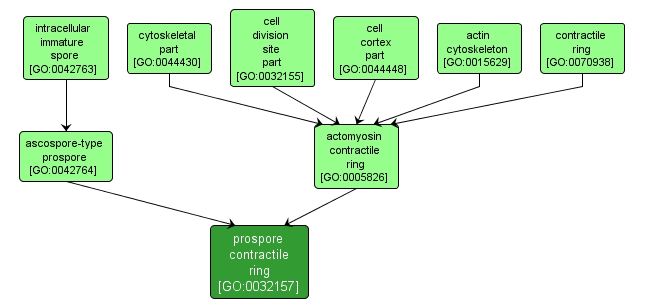GO TERM SUMMARY
|
| Name: |
prospore contractile ring |
| Acc: |
GO:0032157 |
| Aspect: |
Cellular Component |
| Desc: |
A contractile ring, i.e. a cytoskeletal structure composed of actin filaments and myosin, that forms beneath the plasma membrane of the prospore envelope in meiotic cells in preparation for completing cytokinesis. |
Synonyms:
- meiotic contractile ring
- actomyosin ring
- cytokinetic ring
|
|

|
INTERACTIVE GO GRAPH
|














